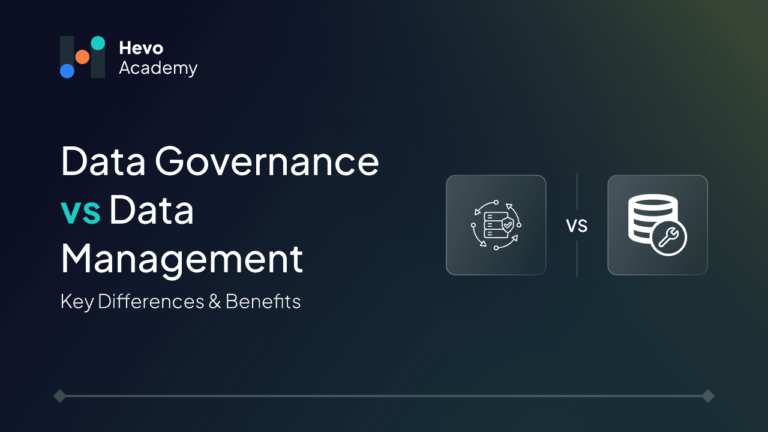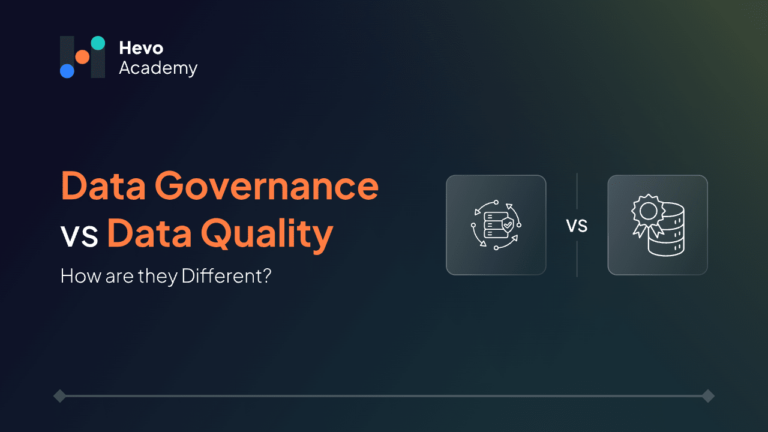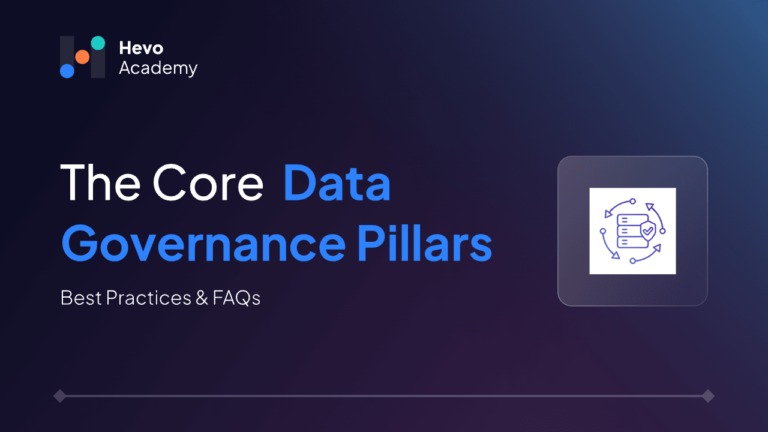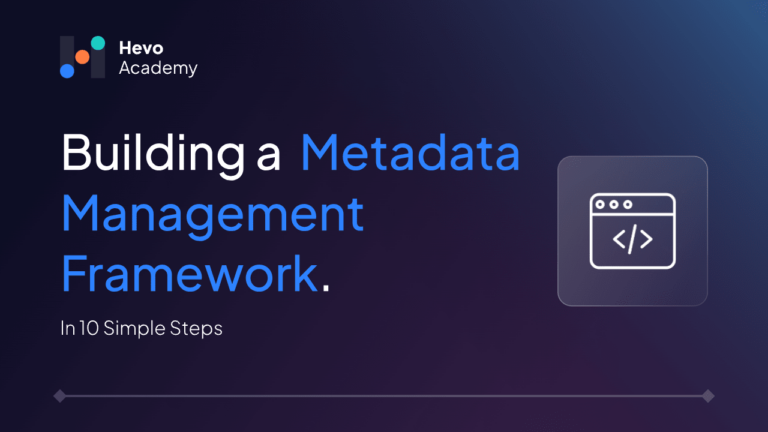Data governance is a comprehensive framework designed to ensure that data is collected, stored, used, and protected in a way that aligns with an organization’s strategic objectives and regulatory requirements. With the increasing volume and value of data, the importance of data governance has skyrocketed. It is essential for protecting sensitive information, maintaining data integrity, and ensuring compliance with data privacy regulations like the General Data Protection Regulation (GDPR). These regulations have driven organizations to adopt robust data governance practices to protect personal data and demonstrate accountability for their data-handling activities.
Table of Contents
Data governance is a backbone of an effective data management strategy, which focuses on implementing policies imposed by data governance throughout the data lifecycle (from ingestion to consumption). Without its implementation, a data governance framework remains just a plain list of definitions and rules with no effect. Therefore, the two have an inter-changeable role in the overall enterprise data strategy.
In this blog, we will speak of Data Governance vs Data Management in detail, and explore how understanding their interplay can enhance your organization’s data strategy.
What is Data Governance?
Data governance refers to a set of procedures imposed to manage data-related activities within companies. In particular, the data governance framework includes specifications on how data is collected, stored, processed and consumed by relevant stakeholders. A well-defined data governance framework ensures that the right people have access to the right data at the right time, using the right methods to make the right decisions.
The primary objective of data governance can be summarized as follows:
- Data Quality: Ensuring data is accurate, consistent, and complete.
- Data Security: Protecting data from unauthorized access and breaches.
- Compliance: Adhering to data privacy regulations.
- Accessibility: Making data accessible to authorized users when needed.
- Usability: Ensuring data is easy to understand and can be used for decision-making.
- Alignment: Ensuring data practices meet the company’s business objectives.
Key Components
Data governance stands on three pillars: policies, processes and roles.
- Policies: a set of documented rules and guidelines on “what” data needs to be governed and properly managed;
- Standards/processes: a set of structured workflows which specify “how” policies should be enforced and maintained across different stages of the data lifecycle;
- Roles and responsibilities: define “who” is responsible for the creation and enforcement of policies and processes.
It is important to understand that there are no “one-size-fits-all” solutions when it comes to establishing a data governance framework for your organization due to the variations in organizational structure, values, and processes.

Data Governance Tools
Data governance tools are software solutions designed to automate and facilitate data management activities to help organizations implement and enforce established data governance policies and procedures. To do this, they often come with a rich set of features such as:
- Data cataloging – used for creating a detailed, organized inventory of the company’s data assets (e.g. Alation, Collibra, IBM Information Governance Catalog),
- Data lineage – enables tracking the flow of data from its source to its target destination (e.g. IBM InfoSphere Data Lineage, Informatica, Talend Data Lineage),
- Data quality evaluation – comprehensive platforms offering support for data profiling, cleansing, and matching to help organizations improve the accuracy, completeness, and consistency of their data (Talend Data Quality, SAP Data Services, or Informatica).
For streamlined data operations and enhanced data governance, consider Hevo. It simplifies complex data management tasks and ensures seamless integration.
- Real-Time Data Pipelines: Seamlessly integrate and transform your data with real-time processing.
- No-Code Platform: Easily build and manage data workflows without writing a single line of code.
- Integration Capabilities: 150+ pre-built connectors help you setup data pipelines in minutes.
- Security & Compliance: Hevo provides end-to-end encryption and is HIPAA, GDPR, and SOC2 type II compliant
Discover how Hevo can elevate your data strategy!
Get Started with Hevo for Free
What is Data Management?
Data management refers to a set of practices used to collect, organize, store, process and use data in line with policies and standards established within an organization. It includes a wide scope of activities aimed to ensure that relevant data is accessible, consistent, reliable and secure. Data dictionary tools play a vital role in data management by ensuring consistent definitions and standardized structures for data across all processes and systems.
Several roles are the main stakeholders taking part in data management:
- Database Administrator (DBA): Operates and maintains the organization’s data sources, and collaborates with other teams to ensure that those data sources are developed and up-to-date;
- Data Analyst: Explores data sources searching for extracting valuable insights from data;
- Data Manager: Leads the data management team to maintain data quality in data sources.
Key Components
Data management relies on various components to ensure data remains a valuable asset:
- Data collection – gathering data from source systems;
- Data storage – storing data in appropriate formats and locations;
- Data protection – employing mechanisms to prevent unauthorized data access and use;
- Data quality – ensuring data is accurate, consistent and complete;
- Data integration – joining data from different data sources with no losses or inconsistencies;
- Data governance – establishing policies and procedures for controlling the use and management of data;
- Data analytics – exploring data to extract insights and make informed decisions;
- Data visualization – presenting data in a clear and understandable way to its users;
- Data lifecycle management – managing data (flows) from data collection to consumption.
Data Management Tools
Data management tools are software solutions that provide organizations with the support they need to carry out the extensive list of data lifecycle management activities listed above.
The list of available market solutions for carrying out data management activities is quite extensive, and some examples of tools include:
- Data collection – Talend, Apache NiFi, Azure Data Factory;
- Data storage – databases (PostgreSQL, MongoDB, Redis), data warehouses (MS SQL Server) or data lakes (MinIO);
- Data protection – Azure Active Directory (EntraID), OpenSSL, firewalls;
- Data quality – Talend Data Quality, Data Wrangler;
- Data integration – MS Integration Services, Talend, AWS Glue;
- Data governance – listed above;
- Data analytics – Tableau, Qlik, MS Power BI, KNIME;
- Data visualization – Tableau, D3.js, MS Power BI.
Comparison Table Between Data Governance and Data Management
| Factors | Data Governance | Data Management |
| Processes | Focuses on establishing policies, standards, and procedures to govern the use and management of data. | Involves the day-to-day activities of collecting, organizing, storing, and analyzing data |
| Scope | Organizational-wide | Department- or project-level |
| People | Focuses on defining roles and responsibilities for data stewardship, data quality, and compliance. Mostly aimed for data stewards and business users. | Involves a broader range of roles, including data analysts, data engineers, and data scientists. |
| Stakeholders | Executives, legal department, compliance officers, data analysts | IT teams, data engineers, business analysts |
| Technology | Relies on tools such as data catalogs, data quality tools, and metadata management tools. | Relies on using a wide array of tools, including data integration, data storage, data protection, data analytics tools and other. |
Key Differences- Data Governance vs Data Management
- Scope:
- Data governance refers to a broadly established framework designed to define policies, procedures and roles governing a proper use and access of data in an organization.
- Data management refers to day-to-day activities of collecting, storing and using data, which implement the governance framework.
- Focus:
- Data governance prioritizes the business aspect of data management in order to ensure that data is handled effectively, responsibly and in line with established regulations.
- Data management prioritizes the technical aspect of handling data by employing different tools throughout the data lifecycle.
- Implementation:
- Data governance often relies on top-down approach to establish organizational-level policies and standards by the top management and communicating those to individual departments.
- Data management follows a bottom-up approach of hands-on activities carried out by data experts within an organization.
Similarities Between Data Governance and Data Management
Data governance is among the key components of effective data management. Therefore, the two are still inter-connected and share some similarities such as:
- Objective – both aim to ensure that data becomes/remains a valuable asset for the organization’s decision-making process.
- Focus – both focus on data and establishing a robust approach to data handling.
- Interdependence – the data governance framework must be implemented within data management activities to ensure an effective data strategy within the organization.
- Impact – both have a significant effect on the value obtained from data for the organization, which can be used to improve its operational efficiency.
How do data governance and data management work together?
Regulatory compliance
When combined, they serve to establish a comprehensive framework for transparent and secure data management complying to relevant standards and regulations such as GDPR, Data Act or HIPAA. Data governance also aims to standardize data management processes, which can be validated through data management activities to evaluate its ability to maintaining data quality. The combination is also used to identify potential risks and gaps in data handling that must be addressed.
Role-Based Access
Both data governance and data management rely on the concept of role-based access, which provides the means to restricting access to data to only specific people in your organization based on their assigned role. Among others, data governance specifies those roles and their responsibilities, which must be enforced by data management tools through different security mechanisms.
Data Cataloging
Data cataloging is one of the activities when it comes to data governance, whereby the organization must first identify all its data assets to understand the pool of data available for use. Data management activities use the entries in the data catalog as their input, as it helps them discover and access data dispersed across different source systems.
Conclusion
Both data governance and data management represent a crucial building block of modern data-driven organizations wanting to ensure that their data-related activities are carried out in compliance with relevant standards and regulations and in an efficient and effective manner. Data governance provides the framework and guidelines, while data management ensures that those guidelines are implemented and followed. Together, they help organizations establish and maintain a strong framework resistant to modern risks associated with data handling. Sign Up for a 14-day Free Trial.
FAQs
1. What is the difference between data management and information governance?
Data management focuses on technical aspects of handling data (e.g. data integration and storage), whereas information governance covers a broader context of establishing procedures and policies for governing the use and management of data.
2. Is data governance same as MDM?
No, data governance is a broader concept representing the overall framework for handling data in an organization. Master Data Management (MDM) is a specific component of data governance focusing on ensuring consistency and accuracy of critical data assets called “master data”.
3. What are examples of data governance?
Healthcare organizations must comply with the Health Insurance Portability and Accountability Act (HIPAA) to protect patients’ data, so data governance ensures the compliance of procedures for handling patients’ records with HIPAA. Retailers collecting customer data must handle them ethically and responsibly.
4. What is data governance in simple terms?
Data governance is a rulebook specifying how you must collect, store, use and protect your data in a responsible way.
5. What is the role of data management and governance?
Both aim to ensure that your organization’s data is accurate, consistent and protected and it can be used as reliable input for any data-driven activities.






